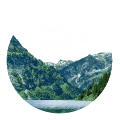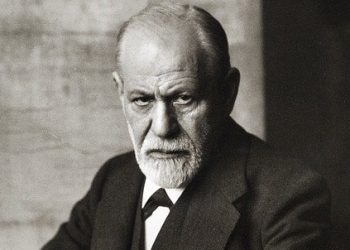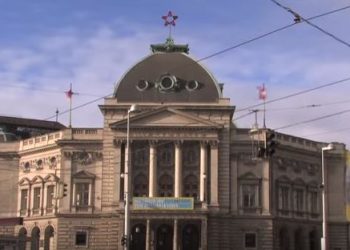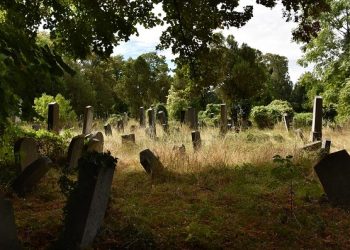The MAK is one of the world’s most important museums for applied and contemporary art. The museum features eight art displays that include significant art objects such as chairs by the designer Michael Thonet, a variety of furniture by Danhauser, works by Gustav Klimt, a collection of Venetian glassware, antique silverware, porcelain, carpets from the 15th century, and art objects from the Far East.
What exactly is the Museum of Applied Arts – MAK?
In 1863, the museum was founded by Emperor Franz Joseph I and was intended to be a place where works of art by designers and craftsmen would be displayed. For the museum’s needs, an impressive building was constructed on the Ringstrasse in the Neo-Renaissance style. It was the first museum on this street and was designed by the architect Heinrich von Ferstel. The interior of the building was adorned with a variety of impressive ceiling paintings by the painter Ferdinand Laufberger. The museum opened to visitors in 1871 within this magnificent building.
In parallel with the museum’s establishment, the Vienna School of Arts and Crafts began operating in 1867. In 1877, the school was annexed to the Museum of Applied Arts and continued to operate under its management. The joint operation of the museum and the art school was accompanied by much friction and problems, and in 1909 they became two separate entities with separate management.
After the establishment of the First Austrian Republic in 1919, many art objects were transferred to the museum from the private collections of the Habsburg family. Later, some of these collections were given to the Museum of Art History.
During the Nazi rule in Vienna, private collections of various artworks were forcibly taken, thus expanding the museum’s art collection. To this day, only a portion of the confiscated collections have been returned to their rightful owners. Towards the end of World War II, the city of Vienna was heavily bombed by the Allied air forces, and the historic museum building was also damaged. It took several years of restoration and renovation to return the building to its original beauty. The museum reopened in 1949 after extensive renovation work. In 1989, the museum underwent another renovation, and several exhibition rooms were added.
Today, the museum has additional branches with various collections from the museum’s holdings. One branch is located in a small palace called Geymüllerschlössel, which displays the private collection of Dr. Franz Sobek, including 160 antique Viennese clocks from 1750 to the 19th century, as well as antique furniture from 1800 to 1840. The palace is located in the suburbs of Vienna in a village called Pötzleinsdorf. Other branches of the museum are in the Czech Republic and Los Angeles.
The museum works extensively to strengthen contemporary art and actively supports various artists in the field of modern art. The works of these artists are displayed in the museum as part of its temporary exhibitions.
The Permanent Exhibitions at the MAK Museum
The museum displays a wide variety of artworks from different periods, including paintings, household items, furniture, sculptures, and more. The permanent exhibitions in the museum are divided into 8 different displays dealing with the following topics:
1. Vienna 1900
This exhibition features 500 exhibits from the years 1890 to 1938. The exhibition rooms are arranged in chronological order. The first room is dedicated to the “search for a modern style,” the second room presents the Viennese style, and the third room shows the path to an international style.
2. Renaissance, Baroque, Rococo
This collection focuses on one of the oldest applied arts in the world: glass blowing and design. The collection includes many diverse vessels, among them rare Venetian glass jars.
3. Historicism, Art Nouveau
This exhibition features many chairs created by the chair designer Michael Thonet, who owned one of the most successful carpentry workshops in Vienna. Thonet used ancient methods of bending wood to create spectacular furniture.
4. Biedermeier – The Imperial Style
The collections in this exhibition illustrate the variety of designs and raw materials used to produce household goods and commodities at the beginning of the 19th century and the Biedermeier period. During this period, there was a flourishing of design and creativity, highlighted by exhibits such as household items, silverware, furniture, and more.
5. Baroque, Rococo, Classicism
The exhibition features diverse furniture from the 18th century. The main exhibits are from Austria, France, and Germany. You can be impressed by the practical and striking design of furniture used for workrooms, storage, and comfort.
6. Asia – China/Japan/Korea
This collection of applied art objects from the Far East is one of the most impressive in Europe. The collection consists mainly of works by the Japanese artist Tadashi Kawamata.
Watch a visit to the MAK Museum:
Essential Information for Visiting the MAK Museum
Opening Hours:
- Tuesdays: 10:00 AM to 9:00 PM
- Wednesdays to Sundays: 10:00 AM to 6:00 PM
- Mondays: Closed
- Open on public holidays, even if the holiday falls on a Monday.
- The museum is closed on the following dates: 25.12 and 1.1.
Admission Costs:
You can buy tickets online on the official website. Tickets at the box office cost one euro more. The prices below are the online ticket prices.
- Adult: €15.50
- Student (under 27), Senior: €12.50
- Children and youth up to age 19: Free admission
- Audio guide: Free. Link to the free audio guide.
Address
Stubenring 5, 1010 Wien
How to get to the MAK Museum by public transport?
The MAK Museum is centrally located on Vienna’s Ringstrasse. It can be easily reached by public transport. Several subway, bus, and tram lines stop nearby.
- Subway: The orange line (U3) stops at the Stubentor station. From there, it is about a 3-minute walk to the museum.
- Tram: Line number 2 stops at the Stubentor station, and from there it is about a 3-minute walk to the museum.
- Bus: Bus line number 74A also stops at the Stubentor station. From this stop, it is about a 3-minute walk.
Map:
What else can you see in the museum’s area?
Vienna’s first district is full of wonderful attractions that are a must-see! Near the museum is the well-kept City Park (Stadtpark), with a small lake and a channel of the Vienna River. It’s nice to walk through the park and enjoy the greenery and tranquility. At the edge of the park, there is a subway station called Stadtpark, from where you can take the green line (U4) one stop to Karlsplatz, where the Opera House, Karlskirche, and the Konzerthaus are located. Alternatively, you can walk about 10 minutes to the wonderful House of Music (Haus der Musik).


















